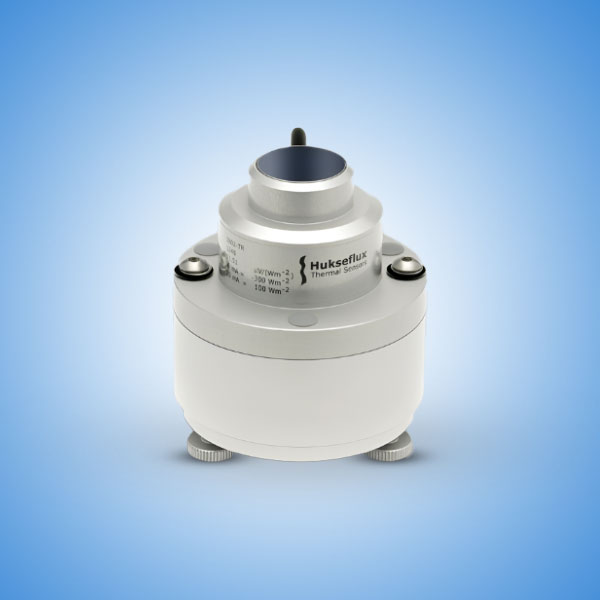Pyrgeometer
A Pyrgeometer is a specialized scientific instrument used to measure longwave infrared radiation emitted by the Earth’s surface and atmosphere. Designed to monitor downward and upward longwave radiation, a Pyrgeometer plays a critical role in understanding the Earth’s radiation balance, climate change, and atmospheric studies. It is a key component in meteorological stations, research facilities, and solar energy systems.

Frequently Asked Questions
A Pyrgeometer is a radiometer designed to measure longwave radiation in the infrared spectrum, typically ranging from 4.5 to 100 micrometers. Unlike pyranometers, which measure shortwave solar radiation, Pyrgeometers are used to detect the energy emitted by clouds, the atmosphere, and the Earth’s surface—especially during nighttime or cloudy conditions.
These devices are calibrated to deliver precise measurements of infrared radiation, helping scientists understand heat loss from the Earth and energy exchange between the surface and atmosphere.
A Pyrgeometer works by detecting infrared radiation using a thermopile sensor covered by a special dome that filters out shortwave radiation. The thermopile generates a small electrical voltage in response to the thermal difference between the sensor and the incoming longwave radiation.
To measure the net longwave radiation, the Pyrgeometer is often paired with a temperature sensor and a signal amplifier. The output data provides valuable insights into atmospheric radiation levels, which are critical for climate modeling, greenhouse effect analysis, and energy balance calculations.
Modern Pyrgeometers are designed with high precision and reliability for use in demanding field conditions. Some of the key features include:
1. Wide Spectral Range – Typically measures infrared radiation from 4.5 to 100 ?m.
2. High Accuracy – Ensures precise data for scientific and industrial use.
3. Weatherproof Housing – Built to withstand harsh environmental conditions.
4. Low Maintenance – Designed for long-term outdoor deployment with minimal servicing.
5. Calibration – Each Pyrgeometer is factory-calibrated and traceable to international standards.
These features make the Pyrgeometer a trusted tool for researchers and meteorologists worldwide.
Pyrgeometers are widely used in various scientific, environmental, and industrial applications. Key applications include:
1. Climate and Atmospheric Research – To measure and analyze Earth’s radiation budget and greenhouse gas effects.
2. Solar Energy Projects – Complements pyranometers to assess total radiation balance at solar farms.
3. Meteorological Stations – Part of weather stations for long-term atmospheric data collection.
4. Agricultural Monitoring – Helps in modeling evapotranspiration and crop-climate interactions.
5. Environmental Modeling – Supports simulations related to global warming and radiation transfer.
In every application, a Pyrgeometer provides valuable data for improving our understanding of Earth’s climate system.
Using a Pyrgeometer offers multiple scientific and practical benefits:
1. Improved Climate Modeling – Accurate radiation data enhances weather and climate predictions.
2. Energy Budget Analysis – Measures heat loss or gain from surfaces, important for energy studies.
3. Supports Solar Research – Offers complementary data to assess nighttime radiation loss.
4. Helps in Greenhouse Effect Studies – Measures infrared energy trapped by greenhouse gases.
5. Reliable Long-Term Monitoring – Can operate for years in remote locations with minimal oversight.
These benefits make Pyrgeometers essential tools for high-precision environmental monitoring.
When selecting a Pyrgeometer, consider the following factors:
1. Spectral Response Range – Choose models covering the full longwave spectrum.
2. Sensitivity and Accuracy – Ensure the sensor meets international performance standards.
3. Environmental Protection – Look for weatherproof casings and anti-dew/dirt coatings.
4. Output Format – Analog or digital output based on your data logging system.
5. Calibration Certification – Always select a Pyrgeometer with certified calibration.
Choosing the right instrument ensures the quality and reliability of your radiation data.
While Pyrgeometers require low maintenance, periodic cleaning and calibration are important to maintain measurement accuracy. Dust, water spots, or snow can interfere with infrared readings. It is recommended to:
1. Clean the dome regularly with soft, lint-free materials.
2. Check for any cracks or damage to the dome or sensor.
3. Perform recalibration annually or as specified by the manufacturer.
Proper maintenance ensures that the Pyrgeometer continues to deliver high-quality data throughout its operational life.











